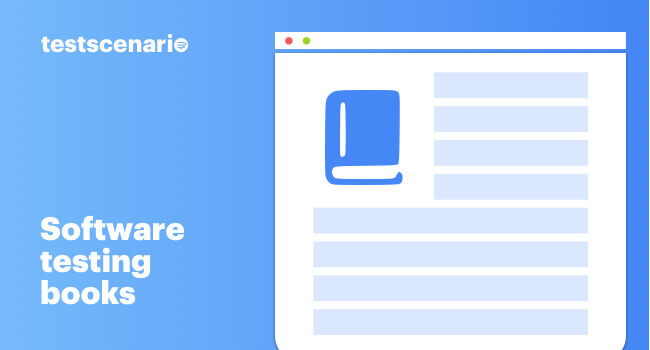
Since its inception, the mobile phone has evolved substantially from hardware and software perspectives. Nevertheless, most of the hardware changes were a result of mobile applications. They have taken smartphones beyond their value as communicating devices. Currently, there are close to five million mobile apps, and the number is increasing with every passing day. Therefore, the mobile app marketplace is crowded and highly competitive.
Smartphone users prefer to use mobile applications that pass the test of quality, security, and usability. Testers use different types of mobile application testing types and tools to test an app on several parameters. Before releasing an app on the marketplace, a tester tests the app on 12 types of mobile app testing.
1) Functional Testing
Among all mobile app testing types, functional testing is one of the most critical. Functional testing focuses on testing the primary objective and flow of an application. It helps in verifying the features and specifications of an app.
While performing functional testing, a tester must check if a user can install the app properly. It also helps to verify that the app launches correctly and there are no issues with login or signup whatsoever. Moreover, functional testing is primarily done to check whether the buttons, boxes, icons, menus, etc., are working accurately, push notifications are rendering correctly, and transactions (if any) are happening seamlessly in the app.
2) Usability Testing
Usability testing or user experience testing is done to check the user-friendliness of a mobile app. Among all types of mobile testing, the usability testing type is the only one that focuses on human experience and not the technicalities of an app.
Moreover, usability testing of an app is done on a real mobile device rather than on an emulator. Here, a tester checks various scenarios by mimicking the actual end-user using the app for the first time. Based on her experience, she gives feedback to the project manager, designer, or developer to update the app accordingly. While checking for the usability of an app, a tester checks whether the app looks visually appealing. She also tests its intuitiveness and response times.
3) Performance Testing
Performance testing is done to check a mobile application’s stability, responsiveness, and speed in different workload conditions. It helps to ensure that an app does not malfunction in any given condition or scenario.
First of all, a tester lists various performance parameters by identifying the potential bottlenecks in the application. Then the app is put into various working conditions to test device performance, network performance, API performance, and recovery capabilities. Some popular types of performance testing are stress testing, spike testing, soak testing, volume testing, and load testing.
4) Security Testing
Security testing is one of the most critical mobile app testing types. According to data, 80% of the users delete an app if they find any security issues while using it. For example, a fitness tracking app asks many personal questions to sign up on its platform. A user will only enter those details if the app guarantees that his data will not leak or be sold to other companies.
A QA engineer should test an app for every possible cyber-attack or every possible reason for data leak or stealing. One way to make the customers feel safe about the application is to ask for the user’s permission at every stage of the signup process. On top of that, the tester must also pass the app through various benchmark security tests and get the app certified.
5) Interruption Testing
While using a smartphone, any type of interruption is inevitable. Interruption testing ensures that the app works perfectly fine in case of certain interruptions, such as getting a phone call, text message, push notifications, alarms, lower network connectivity, low battery, plugged out or in when charging, and more. QA engineers usually forget to test the application when the phone updates the OS or the app itself.
6) Manual Testing
Manual testing is one of the oldest yet one of the most effective methods of testing a mobile application. Manual testing can help navigate through the complexity of a mobile application. It helps to ensure that the mobile app built for the final release works according to the developer’s and user’s expectations. It is useful to test for scenarios that don’t come naturally to a user. Physical interface tests, complex tests, and exploratory tests are some of the types of manual testing.
7) Compatibility Testing
Compatibility testing is a type of non-functional testing that helps ensure that the mobile application works properly across various operating systems, devices, network environments, and specific internal hardware specifications. To capture a larger audience, performing compatibility checks is quite important.
There are two types of compatibility checks, backward compatibility, and forward compatibility. Backward compatibility checks are done to test whether the app works in older software versions. On the other hand, forward compatibility checks help us learn the behavior of an app in newer software versions, including the beta version.
8) Localization Testing
Localization testing is important for apps that target audiences from specific geolocation. It helps in testing features that change with the geographic location of the mobile application. For example, if we log in to the Amazon mobile app in India, it will show me the prices of products in INR, whereas if we log in to the app in the USA, it will show product prices in USD.
In addition to that, localization testing is also crucial in testing the language-changing feature based on different geolocations. The app should adapt to different languages based on a user’s location. Customer acquisition becomes easy if the app adjusts its UI/UX, culture, and accessibility based on a user’s location.
9) Speed Testing
Speed testing ensures that the app opens up quickly compared to its previous version and competitors’ apps. Speed testing is slightly different from performance testing. Speed testing is done in an ideal working environment, whereas performance testing is done to check the behavior of an app in different working conditions. Moreover, speed testing is a popular method to test the performance of web apps rather than mobile apps.
10) Installation Testing
Installation testing checks whether a mobile app can be installed and uninstalled properly and without any error. On top of that, installation testing also ensures that any updates can be installed seamlessly too. It also checks that the outcomes don’t change if a user decides not to update an app.
11) Memory Leak Testing
Memory leak testing helps a QA engineer identify if a mobile application fails to return the temporary memory, which it uses to function properly. The app cannot function as planned if it drains the existing memory in a mobile device. In case of a memory leak, an app can even face termination when open and closed multiple times. Memory leaks usually occur if there is a bug in programming. Testers can check the memory capabilities of an app by running it on multiple devices simultaneously.
12) Automation Testing
Automation testing is one of the two major types of mobile app testing. As time passes, mobile apps are becoming more and more complex, and so is their testing. Automation testing tools help to test such complex mobile and web applications. These tools help reduce the tedious tasks performed by human testers.
Automation testing mainly helps integrate and align the existing workflows, manage test automation framework, test runs and setup, review and validate defects and test results, and more. In addition to that, it also carefully monitor flakey tests and provide a rapid response if needed.
Conclusion
Every app developer must incorporate the above-mentioned mobile application testing types to build robust, reliable, seamless, and secure mobile applications. However, not every mobile app has to go through all twelve testing types. Every app is different, so you must get help from a professional mobile application testing company to identify the best testing method suited to your application.








